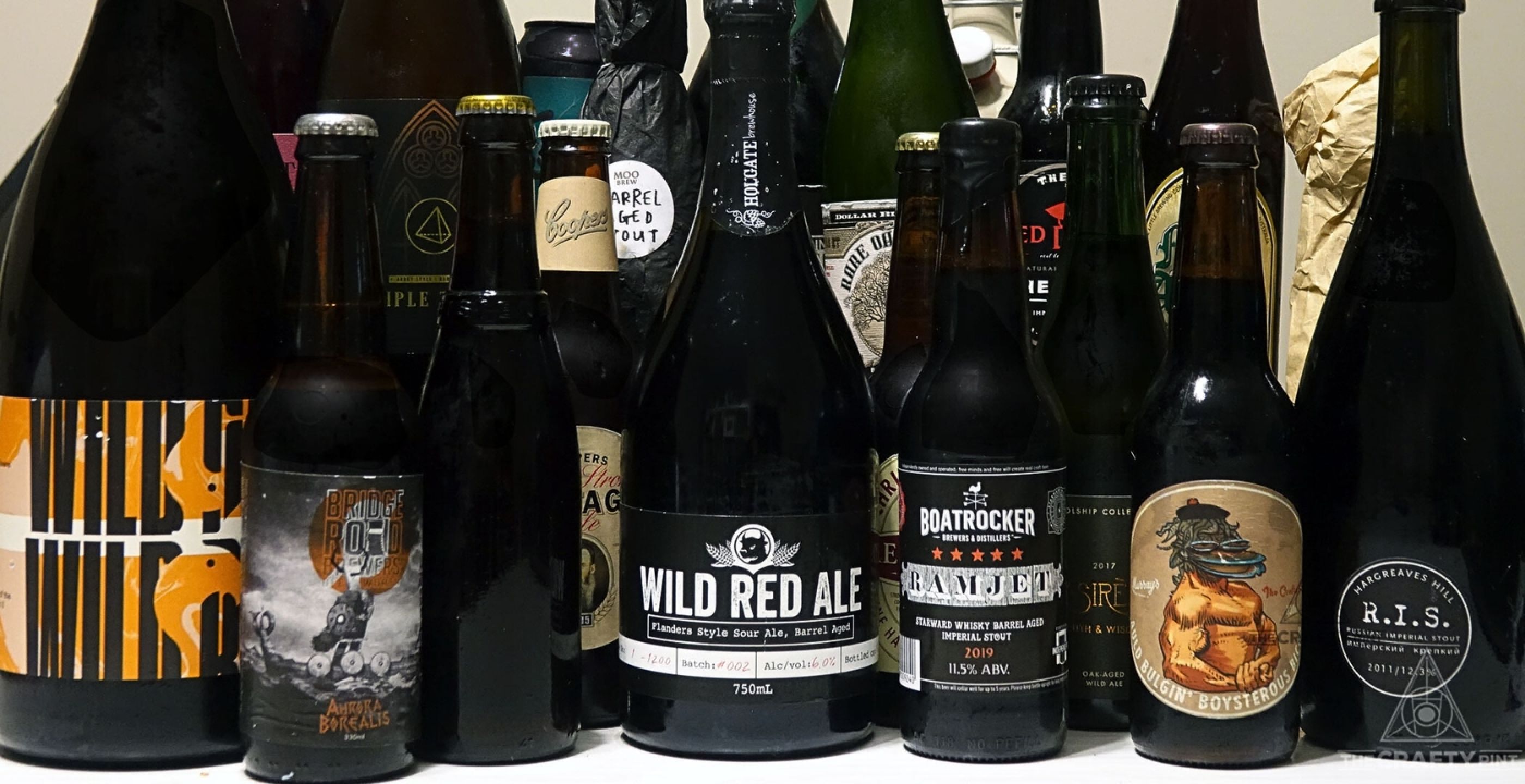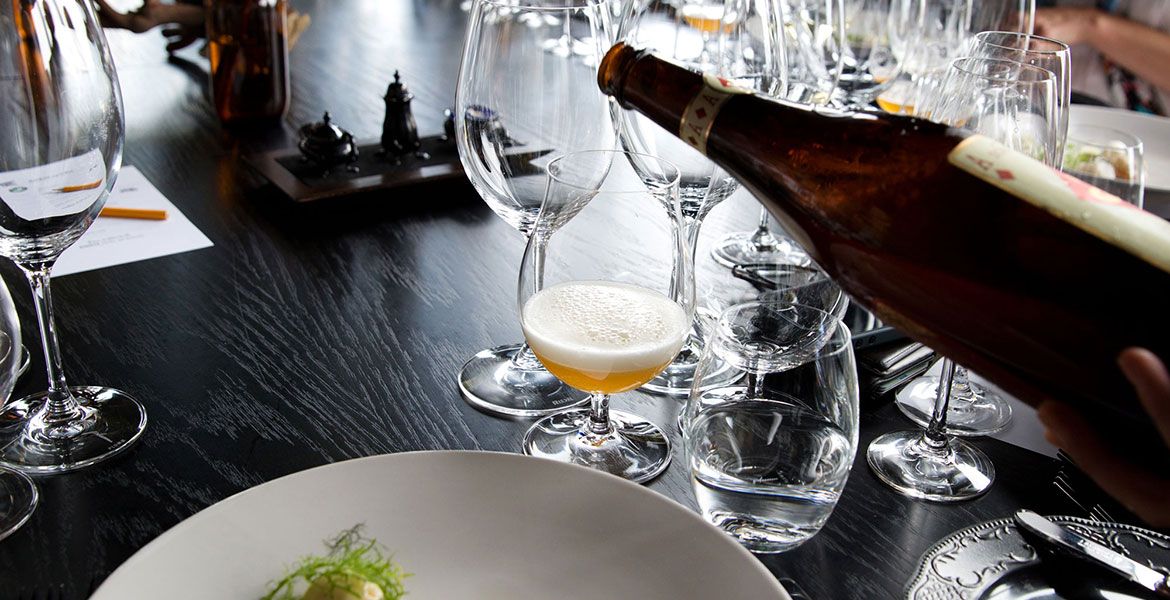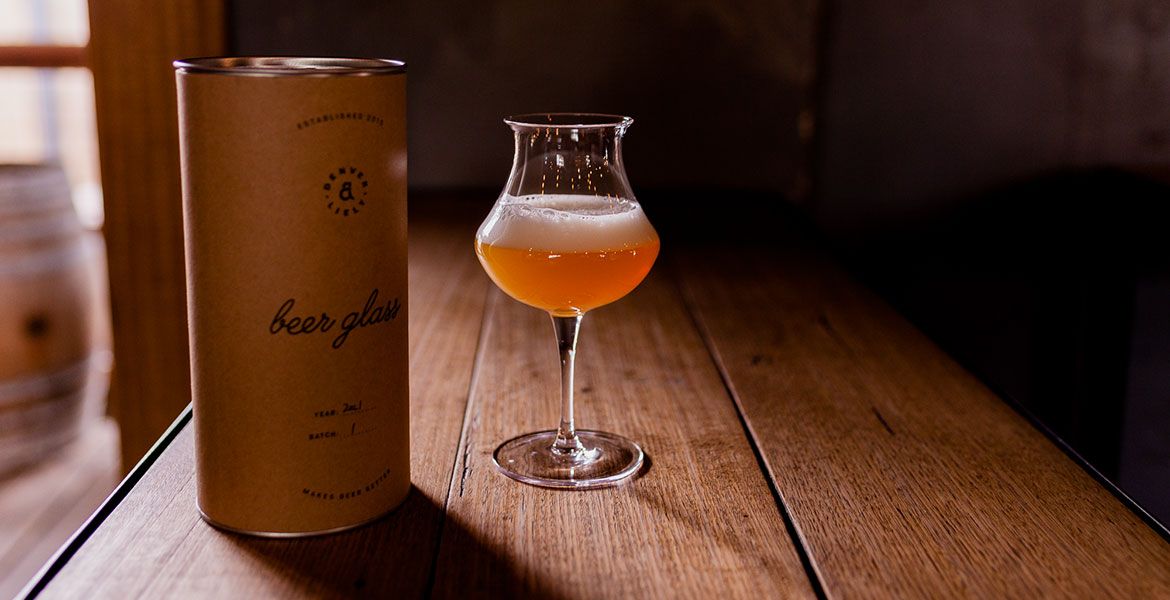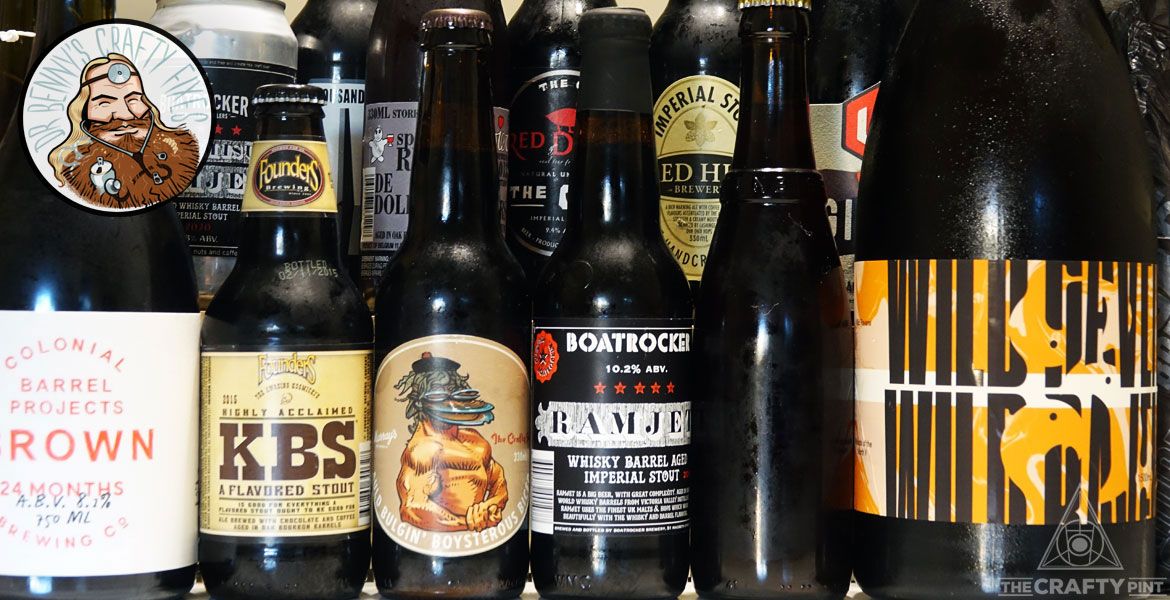Did you receive the gift of fancy beer this Christmas? Are you something of a hoarder? Or are you at that point in your beer adventure where you've start collecting beers suited to ageing and want to know more?
Following a months-long trip exploring the beer culture of Europe, Benedict Kennedy-Cox has decided to start a beer cellar. To help him on the way, he tapped into the expertise of two long-term collectors.
Why Cellar Beer?
For the curious, allocating a place in your home for beer to experience the passing of time at the same rate as you is an urge that comes naturally for many beer adventurers. For others – particularly those who live by the mantra fresh is best when it comes to beer – the idea of cellaring might be perplexing, the sort of pastime undertaken by people with too much time and money.
So, why start cellaring beer?
For me, cellaring is intriguing as it's an easy way to contribute to the flavour profile of your beer without having to actually do much. Having beers in a cellar allows my craft habit to feel like an investment, but instead of investing money I'm investing in a potentially unforgettable future beer.
There's plenty of other reasons that might lead you down this path, however...
- You’re in your 30s.
- You feel the enjoyment of beer should be as sophisticated as that of wine.
- There's an array of Australian beers around brewed with cellaring in mind.
- You’ve been to Belgium and now have a taste for carefully aged beers.
- You’re looking to broaden your palate by exploring the subtle nuances as a beer changes over time.
- You get competitive about dinner parties and would love to add: "Time to pull something out of the cellar" in your arsenal.
- You want stock up on celebratory beers for the rest of your life’s milestones.
- You just feel like it.
As daunting and counterintuitive as it may seem, the brilliant news is that cellaring beer can be broken down into just four simple steps. Plus, you may already have everything you need to get started; if you don't, help is at hand via the wisdom of two avid cellar dwellers: Stone & Wood brewer John Bogan, and co-owner of The Dutch Trading Company (DTC) in Perth, Joel Beresford.
The JBs took me through the lessons they've learned over the years, so get comfy and clean a glass you won’t need for at least a year as we take you through how to set up a beer cellar on any budget.
Pick A Space
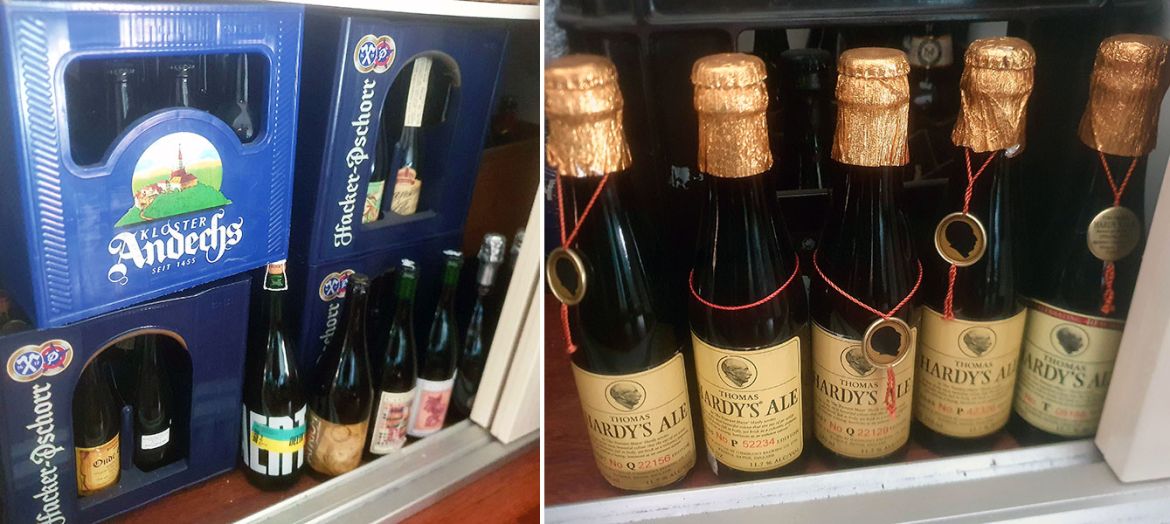
Whether you live in an apartment or a manor house (in which case why are you reading this, you should already have a cellar), the area you designate as your cellar needs to have three key features:
- It's out of direct sunlight.
- It's able to consistently maintain a low temperature.
- It's away from potential contaminants.
Your first thought might be to run to a bar fridge but, as Joel – who maintains both a cellar at home and at The DTC – explains, storing beers in fridges can halt or dramatically slow the development of cellar characteristics as well as "taking up too much space for your everyday beers and things called groceries."
Some cellarers use an ice-less esky, or go as far to deliberately break a bar fridge to keep it at a lower temperature but, from what I’ve learnt, even if you've only got a clean cardboard box to hand you’re off to a great start.
Then it’s a matter of picking the cellaring space in which your beers will be enjoying a time out. According to John, picking the right spot “depends on the house you’re in and the available space," adding: "I’ve got it next to the bathroom, which is on the south side of the house; it doesn’t heat up during the day, it keeps cooler.”
If, like me, you have limited space to work with, you’ll be delighted to learn that a professional cellarer like Joel maximises his options by having a number of cellaring areas.
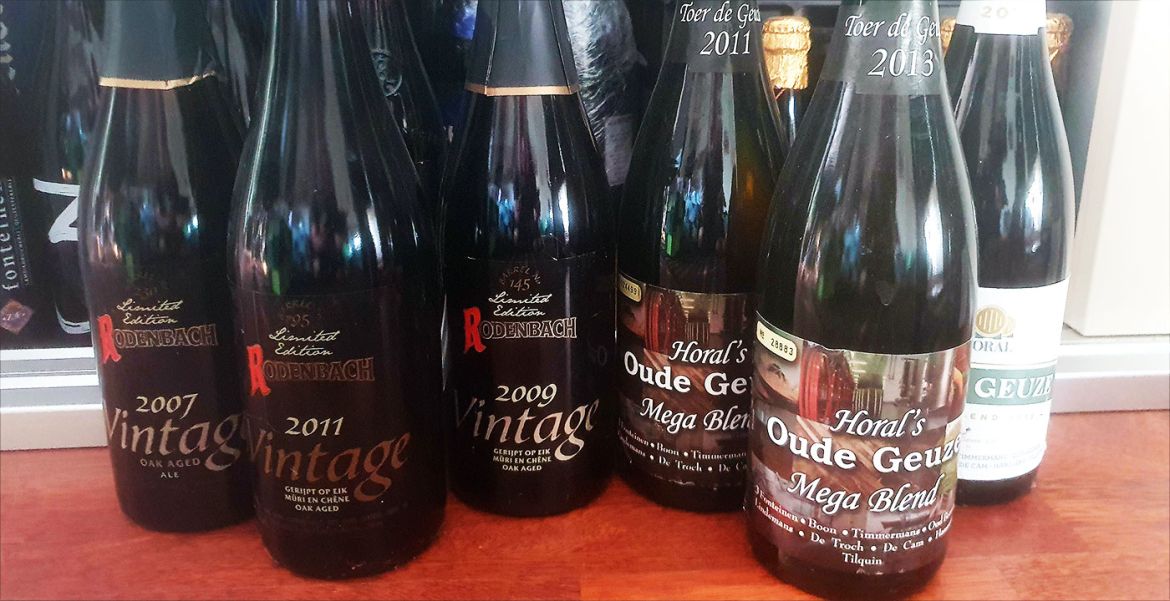
“I have a few spots but the main section is in the ‘play’ room inside a large shelving section," he says. "Luckily for me, the previous owner had a bar setup in there so the space is very good for cool temperature without any mechanical assistance.
"I also have a haphazard lambic spot in my walk in robe area, with a random small wine fridge – not plugged in, of course – thrown in there to boot. I have random shoe boxes full of Cantillon and Drei Fonteinen. I really need to organise this stuff!"
Budget: An esky or sturdy cardboard box on the bottom shelf of the coolest cupboard in your home.
Deluxe: A wine fridge; a "hacked" fridge with digital temperature controller set to around 13/14C; an actual cool cellar beneath your home.
Pick The Beers
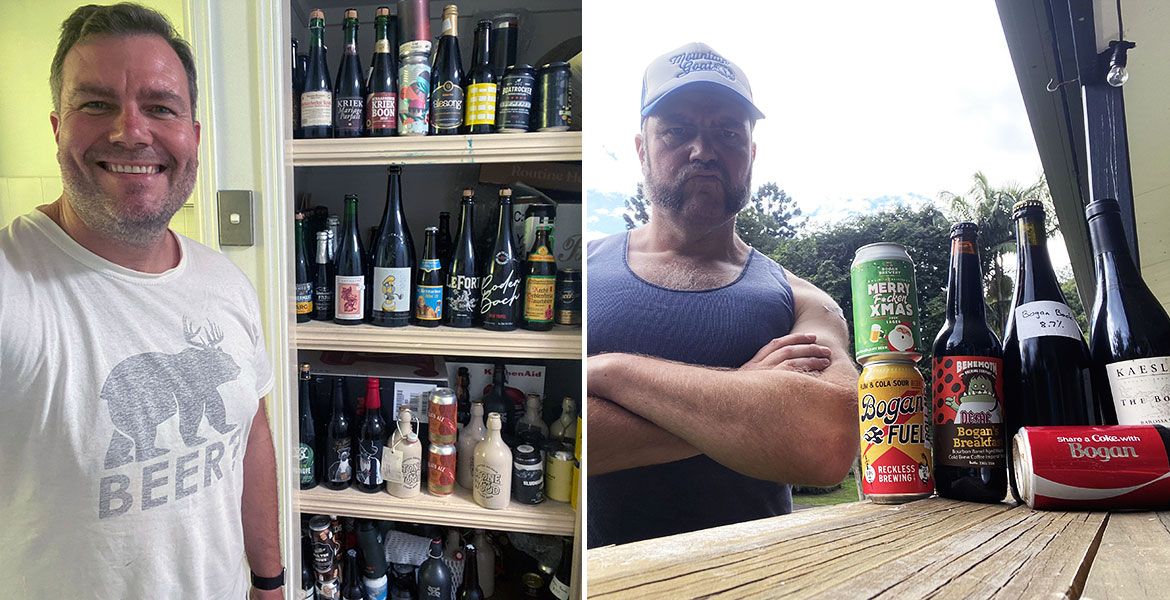
This might seem like the easiest step as it plays into the strength of every beer tragic: buying the stuff. What makes it complicated is that you can't just cellar any beer. Pop a Tooheys Extra Dry in your cellar and drink it in five years if you don’t believe me.
“Styles to look for include imperial stouts, bigger Belgian and Trappist beers, but also quads and tripels with malt complexities,” John tells me. “Anything that’s malt orientated: Baltic porters, even though they’re lagers still have little malty characters that improve. ”
“I've never held onto an IPA for more than six months and, if I did, it’s been in the fridge.”
I was surprised to learn that, according to John, barrel-aged beers don’t necessarily make the best cellar dwellers: "They have already been aged by a barrel, and a little ageing won’t do much."
There's one style that, for Joel, is the absolute standout.
"For me, lambic is king of the cellar," he says. "Not only can they flourish over a long period of time, they also benefit in several categories.
"I love it when the acidity level hums in sync with the other flavours, as they perhaps were not quite there in a younger version. Noticing a jammy fruit characteristic develop over several years, when previously it was a zippy fresh flavour. Oxidisation can also be an enjoyable characteristic in small doses – additional flavours of marzipan, sherry and honeyed characteristics to help deepen a previous simple flavour profile."
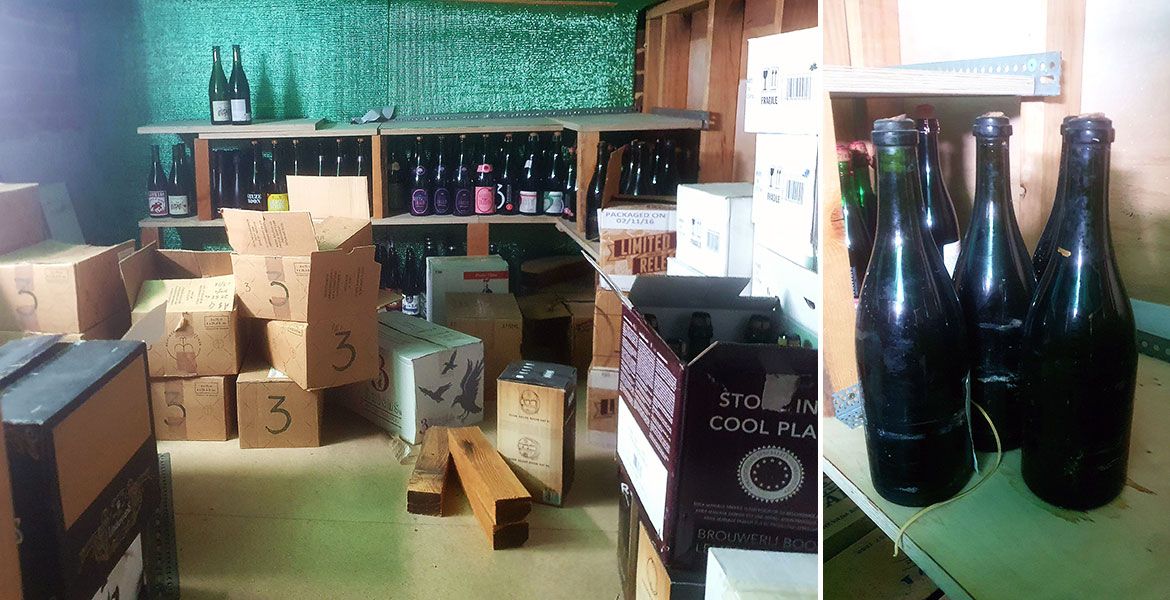
One thing both agree on is that cellaring is a numbers game: it pays to cellar a few of the same beer. Not only does this increase your odds of a successful cellaring in case one spoils, but opening them across various years opens up the possibility of exploring the subtleties of beer aged for one, two, five or even ten years.
Depending on your space and budget, stocking up three to four of a beer you suspect might benefit from a bit of time in the naughty corner is a good place to start. Label them with the brew date and the date they were purchased (I like to put it on the back for photography purposes later on), or get super-technical as Joel does with an obsessive and over-detailed spreadsheet, then move on to the next step.
Note: You'll find many cellars filled with bottles rather than cans, partly as suitable styles are more likely to come in bottles, but also because they allow for more oxidation and ageing. Results from ageing beer in cans is mixed but not necessarily worth ruling out.
Budget: Doubles of locally-brewed, cellaring-suitable beers you enjoyed fresh and later purchased on a ripping 2-for-1 deal.
Deluxe: Imported Belgian lambics, tripels and quads purchased by the case.
Wait, Curate, Make Mates
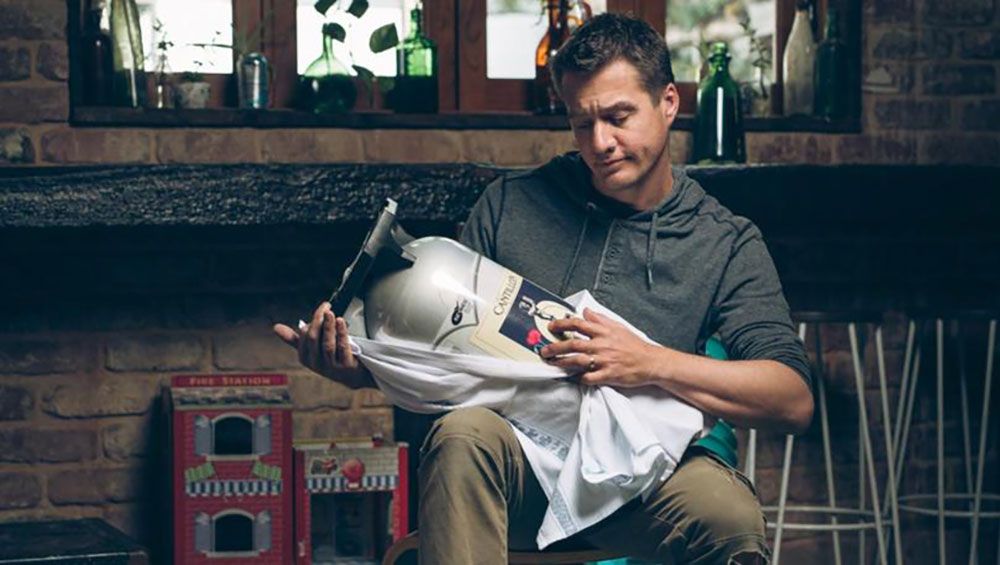
Your space is assigned, your beers have been selected and labelled – it’s time to add them to your cellar.
Joel suggests keeping your beers upright, although if one has a cork then "feel free to lay it on its side". If you choose to do so, be aware some leakage can occur; you'll find arguments for and against this if you delve deeper.
Now comes the hardest part: not drinking the beer.
Luckily, the best way to avoid prematurely drinking your beers is to keep adding new ones to your cellar, repeating the labelling/spreadsheet process as you go. Not only does this retail therapy keep you invested in your cellar, it ensures your cellar doesn’t run dry when you finally crack open a beer or two.
Aside from living your life as usual, another useful way to pass the cellaring time is by making friends with other enthusiasts. Ask around in craft beer groups online or at your next beer event and you’re sure to find some individuals with a cellar full of beers.
Open & Enjoy

It has all led up to this: after crafting your own little cellar, curating your beers, and waiting a year, you’re ready to start opening your precious little flavour/time bombs.
Before you put this long anticipated beer to your lips, consider your expectations and go in with an open mind.
As Joel says: "Cellaring isn’t about making a beer better, it’s more like developing nuances from their original characteristics."
There is no guaranteed success so do as John does: "Take the losses and move on. Don’t be disheartened by the process."
The last technical aspect you’ll want to consider is the serving temperature of your beers. Lambic lover Joel usually serves his lambics chilled but recommends robust stouts and barley wines enjoy a very brief stint in the fridge before serving – just not so long that they become too cold and lock in the flavours you’ve spent years developing.
Overwhelmingly, the number one tip for enjoying your well-cellared beers is to make the most of your investment by inviting other enthusiasts to share in the fruits of your endeavours.
"The best thing that I’ve found is having lots of people around," John says. "A lot of the time it’s in a 750mL bottle – it allows you to bring other people in and you get everyone’s opinion.
"It’s a great way to learn how you taste, what you pick up and what other people pick up. You get other people's thoughts. Once you’ve got all those people there, why not open a few more bottles and get a much fuller experience of the tasting as opposed to having one and not being able to judge it against other beers."
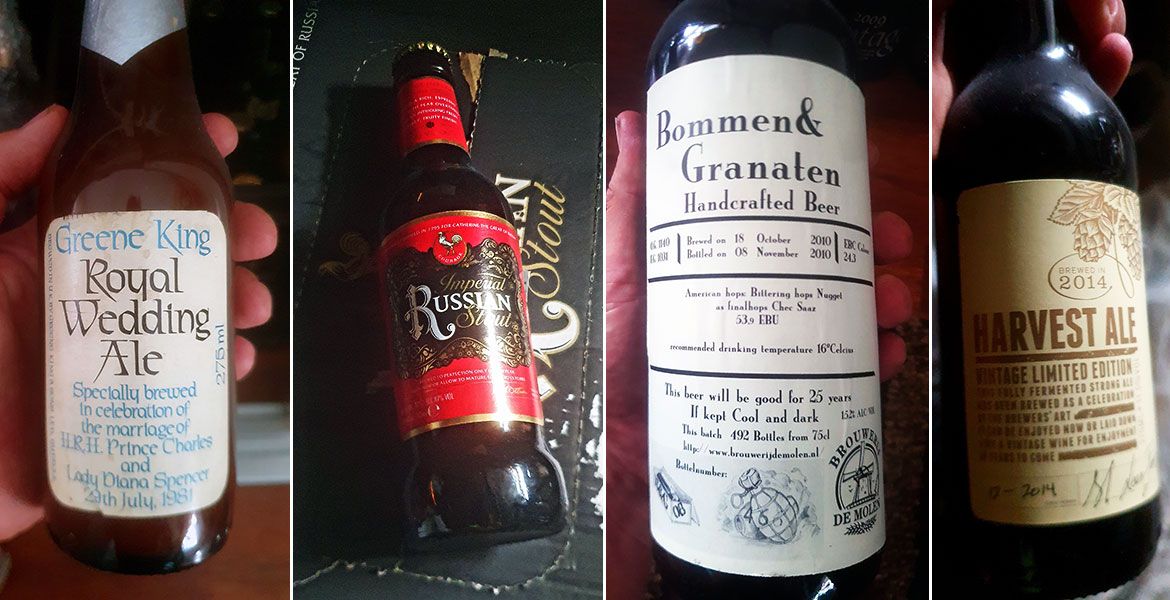
While Joel is also an advocate for sharing your cellared beers, he also recommends: "Don’t always wait for ‘That Special Moment’ to enjoy a well cellared beer," as some of his “best experiences [were] an impromptu cracking of a cellar beer all to myself."
Regardless of who you're with, opening a great beer can be an occasion in itself.
Now that you’re (hopefully) enjoying a beer you've nurtured for years, it’s up to you whether you’d like to cap off the experience by taking notes, pairing the beer with nibbles, updating your spreadsheet, or directing all future topics of conversation towards your time infused beer. And, as the glass empties, with every sip know that you contributed to the experience in the most patient way possible.
Budget: Crack a few at a BBQ with mates you made through beer.
Deluxe: Pair beers with produce from the original brewing region and share generously with friends.




